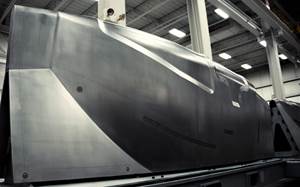Automated RTM process optimizes cost reduction in VW automotive plant
Efficient production of VW T5 transporter roofs allows ten-year price guarantee.
EM Fiberglas (EM, Hornsyld, Denmark) has given an exceptional ten-year price guarantee to Volkswagen AG (VW, Wolfsburg, Germany) on a new fiberglass composite roof assembly produced for VW's T5 transporter van, according to EM sales director, Stig Trunk Black. The 300-mm/11.8-inch high roof is a new addition to Volkswagen's T5 line, configured as family vans, commercial cabs and delivery vehicles in VW's Hannover, Germany facility. VW introduced the roofline in 2003 as a medium-high profile for the T5, midway between its standard steel flat-line roof and an optional 600-mm/23.6-inch high fiberglass roof. While the latter is hand layed up, the new profile is manufactured in a dedicated 1,820m2 (19,590 ft2) facility in Hornslyd, which houses a computer-controlled production line that features advanced part handling equipment. The state-of-the-art line incorporates the resin transfer molding (RTM) process and robotic assembly cells - a highly automated system that handed EM and VW the key to the price-lock.
Europe's biggest car maker, Volkswagen projects significant growth in the overall transport van market over the next few years, a motivation behind the company's decision to add the medium-high roof to its T5 line. Although the T5 is sold only in the European Union, VW's Hannover-based marketing department reports that T5 production will more than double in 2004, to about 190,000 units, up from 70,000 in 2003. About 8,800 vans will be equipped with the medium-high roof package in 2004, up from 7,000 in 2003. European growth follows a U.S. trend. According to market research firm The Freedonia Group (Cleveland, Ohio, U.S.A.), production of light trucks and vans (including SUVs) overtook U.S. passenger cars in 1998 and in 2002 exceeded the same by about 2 million units (7 million light trucks and vans versus 5 million passenger cars). The trend is expected to continue through 2012, with light truck/van production more than double that of cars.
Composites pay well-known benefits to automakers. "Saving weight is the name of the game," notes David B. White, executive board chairman of the Automotive Composites Alliance (ACA, Rochester, Mich., U.S.A.). "To increase the horsepower-to-weight ratio, you either increase horsepower or decrease weight, and the use of composite materials is a leading means of achieving mass/weight savings and associated fuel efficiency," he says. But composites bring more than weight savings to automotive platforms. Styling flexibility, corrosion resistance and significantly lower tooling investment are realized from fiberglass composites in automotive body panels. And for the VW van roof, fiberglass composites offer an additional bonus by lowering the vehicle's center of gravity, so it hugs the road on turns and in high winds - a must for high-profile vans.
Production Automated, Mold Release to Shipment
EM makes T5 roofs for two vehicle wheel-base lengths, 3,000 mm/118 inch and 3,400 mm/134 inch. Each roof assembly consists of eight parts: a curved roof-top panel, molded in one piece; three center beams or stringers; two end stringers that strengthen the panel in the transverse direction and two side stringers that strengthen the panel longitudinally. The transverse stringer set fits either roof length, but longitudinal stringers are sized to fit each roof panel.
The heart of the T5 manufacturing center is a central computer system with dedicated software, which responds to signals from a multitude of sensors to control all RTM process parameters as well as robotic spray equipment, automated lifts and robots that pick and place parts and apply adhesive, and CNC cutting and drilling machinery. EM purchased the computer from Siemens AG (Munich, Germany). A local Danish company programmed custom software for automated production and assembly of all panels and stringers. The line is facilitated by automated tooling wagons that ride on tracks embedded in the factory floor, which shuttle the female mold from gel coating to layup to injection stations. After demolding, trackless wheeled dollies move the molded tops between post-mold production stations.
EM manufactures the roof panels in four matched male/female molds fabricated by local Hornsyld toolmakers. A low-pressure molding system, RTM doesn't need the expensive, high-strength tools required for stamping steel and aluminum parts. Instead, two male/female mold sets are employed for each panel length: one of nickel for the high-gloss gel-coated roofs, and the other of hard anodized aluminum, used to make the roof panels that require metallic finishes, for which a non-gloss surface is preferred. (Metallic finishes are painted, rather then gel coated, by a local Hornsyld vendor.)
EM technical manager Peter Kaasgaard says a proprietary wax mold release on the nickel molds processes up to 200 parts before the mold needs to be cleaned and re-treated. The aluminum molds are treated with a water-based release.
After the nickel molds are treated, the female mold is wheeled on a tooling wagon into a spray booth, where gel coat is robotically applied into the heated mold, using a Wolfangel spray gun from Wolfangel GmbH (Ditzingen, Germany) mounted on robotic equipment manufactured by D3 System A/S (Herlev, Denmark) in cooperation with B&M Verfahrenstechnik GmbH (Eiterfeld, Germany). The gel coat is a low-profile isopolyester product, produced by Büfa's Reactive Resins division (Büfa Reaktionsharze GmbH & Co. KG, Rastede, Germany). Gel coat sprayup takes 7.3 minutes for the short roof and 8 minutes for the long roof; cure time is 12 minutes.
From this point, panels layed up on nickel and aluminum molds are processed identically. The female mold is wheeled to the layup station, where a reinforcement preform assembled and CNC-cut to exact size and shape by Ahlstrom Glassfibre (Karhula, Finland) is hand layed over the gel coat. The flexible sandwich consists of chopped strand mat skins with a 5-mm/0.2-inch thick, low-density (1,100g/2.5 lb) polypropylene (PP) core. E-glass fibers for the preform are supplied by Saint-Gobain Vetrotex (Chambery, Cedex, France), Kaasgaard reports, adding that fiber volume of cured parts is 30 percent by weight. The mat sandwich is not stiff, but easily drapeable, and its PP core acts as a resin flow medium during the resin injection process. The core also adds stiffness to the finished part, reducing the amount of glass that is needed.
A 0.5m by 1m/19.6 inch by 39.4 inch sheet of electrical conductive mesh is laid over the mat sandwich to provide a "ground plane" in the electrical loop between roof-mounted antennae and internally mounted global positioning system (GPS) devices and/or telecommunications equipment supplied by GSM, a mobile telephone system in Europe.
The main computer monitors and controls mold temperature. Electrically heated hot water circulates through each mold to heat it to a specific temperature. The female molds are fitted with silicone tubing around their perimeters at the tops of the molds. During molding, the tubing is filled with air to effect a tight seal.
Auto roof automation: Step-by-step
Step 1
Step 2
Step 3
Step 4
Step 5
Step 6
Step 7
Step 8
With the preform in place, the mold moves to the RTM station, where automated handling equipment loads the mold into the bottom of the 400-ton press, built by EM. In a smoothly automated sequence, the computer enables all facets of the molding operation: When the female mold is in place, the upper press automatically closes, lowering the heated male mold into the female mold, and then hydraulic clamps close and lock the molds together in the press. The perimeter tubing is inflated to seal the mold and, when the mold halves reach the pre-programmed temperature sensors signal the computer to activate the vacuum system, which evacuates the air from the interface between the molds. After the vacuum has been pulled, the computer selects the correct amount of resin, according to the part program, and activates the pump to begin the resin injection process.
The resin supply is held in a temperature-controlled 20,000L/5,284 gal resin tank installed underground outside the manufacturing building. Resin is pumped on-call from the tank to the mixing room, where catalyst and pigment are added. (The majority of the roofs are gray-white, but pigments are available in 25 colors.) Mixed resin is then pumped through overhead pipes to the injection equipment at the molding stations.
VW has established a maximum limit of 1.25 mm/m (0.05 in./3.28 ft) for roof panel shrinkage. "VW expects every roof to precisely fit the first time, every time," says Black. Toward that end, EM uses low-profile isopolyester resin sourced from Reichhold (Research Triangle Park, N.C., U.S.A.) and other polyester resin manufacturers, which incorporate additives that resist resin shrinkage during crosslinking and cure. To avoid overheating and minimize shrinkage, EM's computer oversees the carefully designed cure profile for each part, monitoring the resin/laminate and mold temperatures, time in the mold, time to gel and time to peak exotherm.
RTM injection takes only four minutes to wet-out the roof panel. After the prescribed cure time has passed, the computer signals the clamps to unlock and the press opens. Handling equipment automatically moves forward and demolds the part, lifting the concave-curved panel at a 30° angle for the first 305 mm/12 inches to ensure clearance from the mold. The handling equipment settles the part into a tooling wagon for transport to the central machining center.
Meanwhile, stringers are molded individually offline (see photo, p. 36), using essentially the same layup and computer-controlled RTM process used for the roof panels. Because they are not externally exposed, stringers require no gel coat protection. Instead, the stringer matrix resin is pigmented to match the roof panel. Stringer injection takes 30 seconds.
After cure, roof panels and stringers are trimmed to net shape by the CNC machining center's robotic system, manufactured for EM by Costruzione Macchine Speciali (CMS, Vicenza, Italy). The CNC system senses the type of part that has been delivered and selects the correct custom tool for trimming and drilling. Bolt holes are drilled into the stringers for attachment to the transporter space frame, and the panel and stringers are drilled for installation of cables and antennae. For safety, light beam-activated sensors shut down the CNC center if they sense movement in the working area within 1m/3.28 ft of the machine center. Waste is automatically removed and conveyed into a waste bin outside the machining center. The machined roof panel is vacuumed out and wheeled to the glue station, where it is lifted into position for assembly with the stringers. Stringers are held in a magazine adjacent to the station.
A 7-axis robot, manufactured by the Kawasaki Heavy Industries Ltd. Robot Div. (Akashi, Japan), picks stringers from the magazine and places them into a heated fixture above the cured roof panel. The robot then automatically switches from its retrieval/positioning head to a glue head and applies methyl methacrylate (MMA) adhesive produced by ITW Plexus (Kettering, Northants, U.K.) along specific paths, per the part program. After applying the adhesive, the robot swings out of the way and the overhead fixture descends into the roof panel, pressing the stringers into the adhesive. At this point, the fixture serves as a press, holding the stringers firmly in place until they bond to the panel. Positioning and gluing take about six minutes, with an additional six required for cure. The assembled roof is now ready for shipment, only three hours and four minutes after gel coat application. EM produces 30 finished parts per day (running 8 to 12 hours), with a six to seven person crew.
The RTM centerpiece of the VW production line offers multiple benefits. As a closed molding process, it intrinsically offers a safe, low-emission environment. Additionally, it produces parts with two finished sides. The finished and pigmented underside of the panel and stringer surfaces permits an open-beam architecture in the T5 van interior that saves VW the time and costs associated with covering unfinished roofs on the inside of the van. "The automated process is working very well for the T5 roof, but we continue driving toward the ultimate in materials performance and production efficiency," says Black.
Down the Road
The success of EM's low-cost roof production combined with the overall advantages of composites for automotive platforms may drive these materials to greater use on Volkswagen vans. According to Hannover marketing, "It might be possible that future projects like the VW Microbus will incorporate additional components from glass fiber composite materials."
Related Content
Nine factors to consider when designing composites cure tooling
Gary Bond discusses the common pitfalls and compromises when designing good cure tooling and their holistic significance for a robust composite production process.
Read MoreJEC World 2022, Part 3: Emphasizing emerging markets, thermoplastics and carbon fiber
CW editor-in-chief Jeff Sloan identifies companies exhibiting at JEC World 2022 that are advancing both materials and technologies for the growing AAM, hydrogen, automotive and sustainability markets.
Read MoreJeep all-composite roof receivers achieve steel performance at low mass
Ultrashort carbon fiber/PPA replaces steel on rooftop brackets to hold Jeep soft tops, hardtops.
Read MoreASCEND program update: Designing next-gen, high-rate auto and aerospace composites
GKN Aerospace, McLaren Automotive and U.K.-based partners share goals and progress aiming at high-rate, Industry 4.0-enabled, sustainable materials and processes.
Read MoreRead Next
From the CW Archives: The tale of the thermoplastic cryotank
In 2006, guest columnist Bob Hartunian related the story of his efforts two decades prior, while at McDonnell Douglas, to develop a thermoplastic composite crytank for hydrogen storage. He learned a lot of lessons.
Read MoreComposites end markets: Energy (2024)
Composites are used widely in oil/gas, wind and other renewable energy applications. Despite market challenges, growth potential and innovation for composites continue.
Read MoreCW’s 2024 Top Shops survey offers new approach to benchmarking
Respondents that complete the survey by April 30, 2024, have the chance to be recognized as an honoree.
Read More




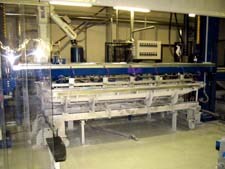
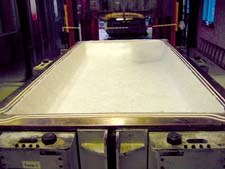
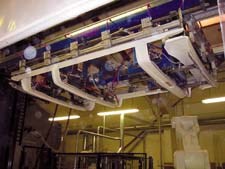
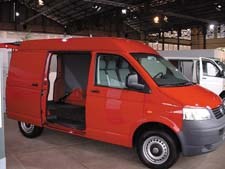
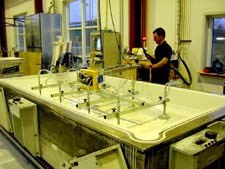
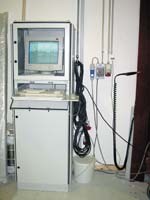
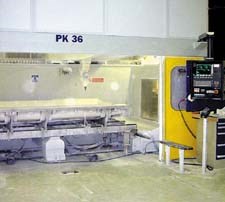
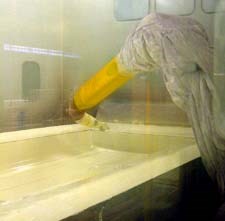
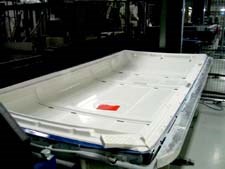










.jpg;maxWidth=300;quality=90)








